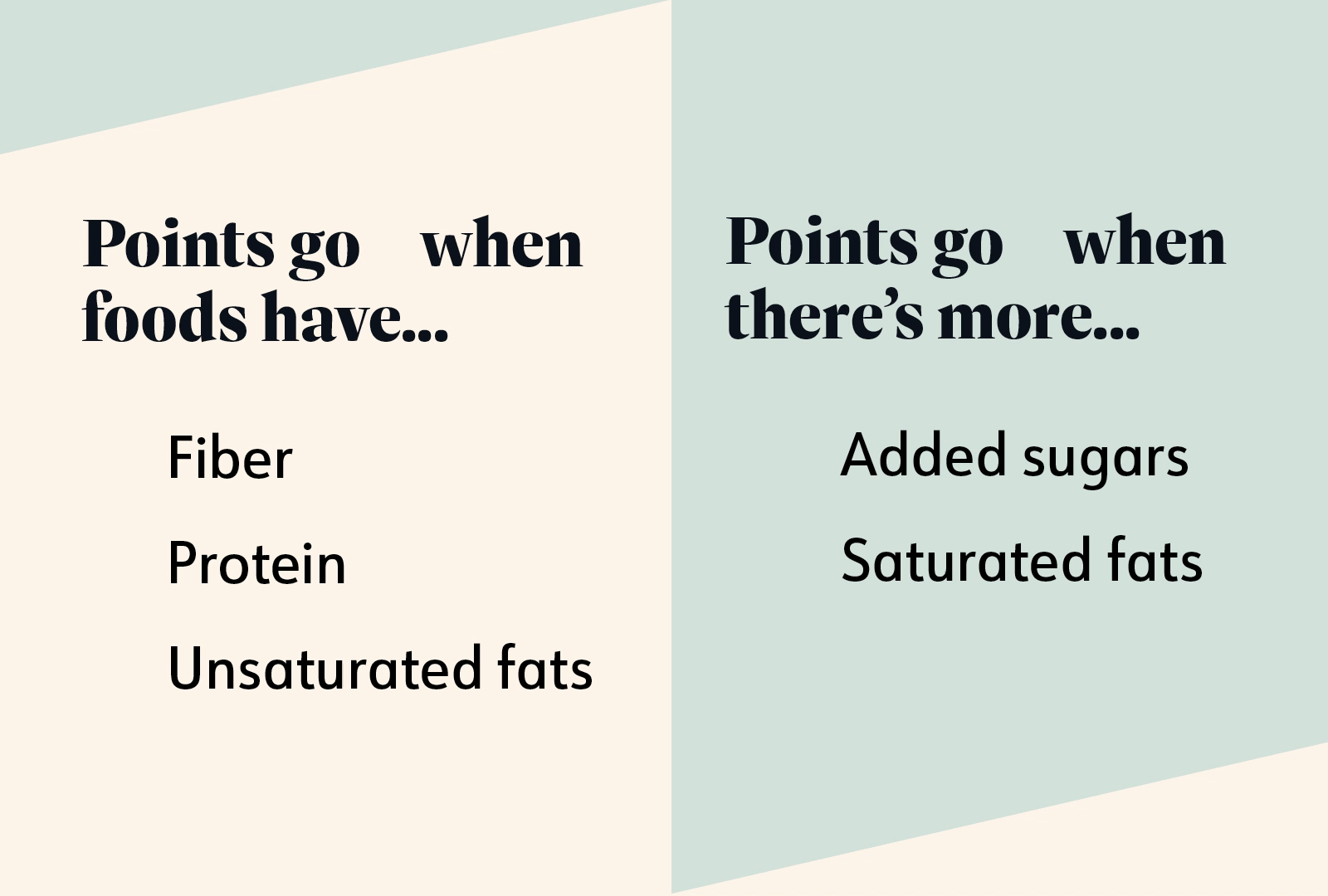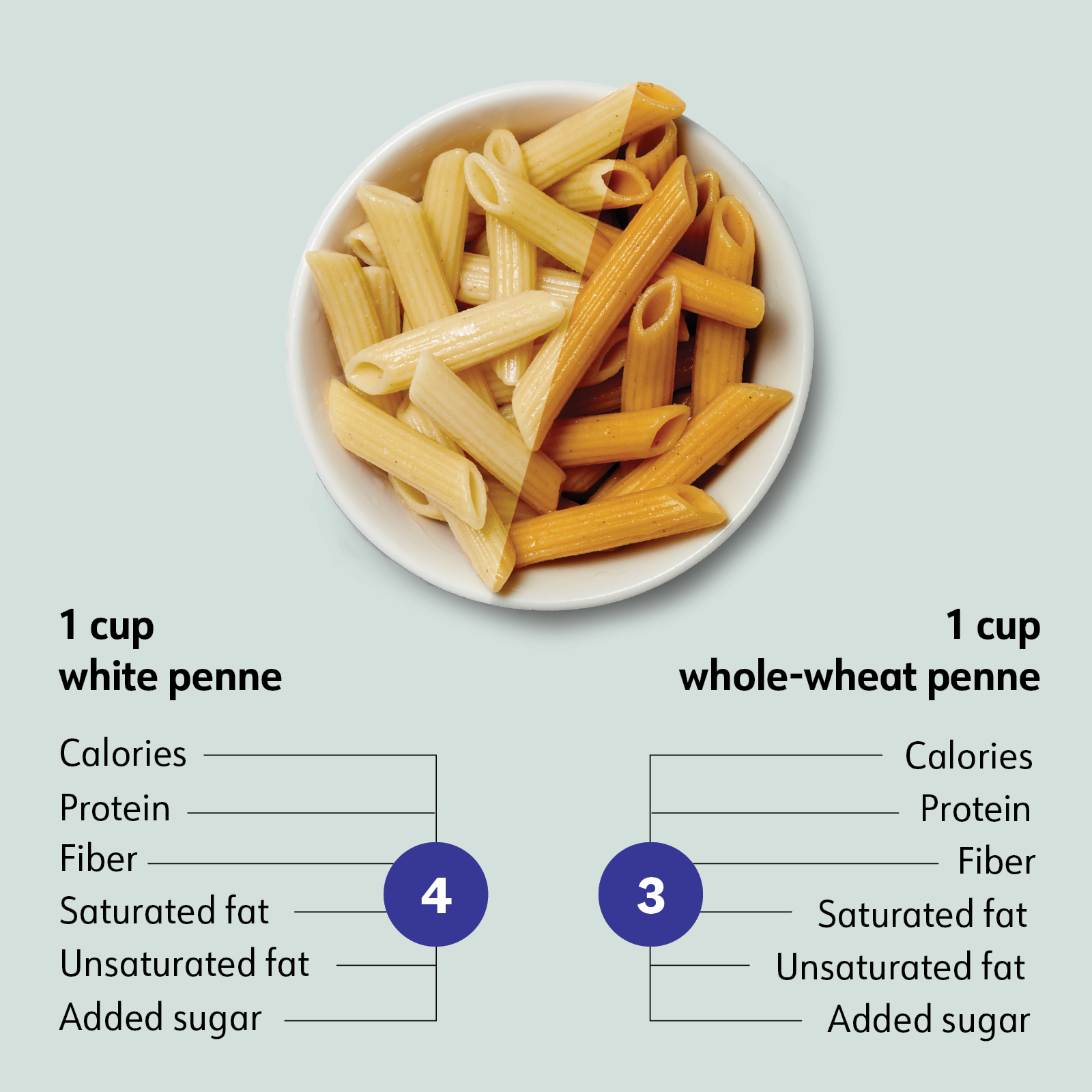HowPersonalPointWork | WW USA
How Points® work
Life is complicated—losing weight shouldn’t be. Our simplified program turns complex nutritional data into one easy-to-use number.

Calories matter, but focusing on calories alone won’t help you reach your goals. Same with protein and fiber. No one nutrient is the key to losing weight or eating healthier foods—they’re all important. So while we’ve simplified our program to make it easier to follow, what hasn’t changed is our Points algorithm. Every food still gets a Points value based on big-picture nutritional data, which help you assess a food on the spot.
Our program—and those Points values—nudges you toward foods that are higher in fiber, protein, and unsaturated fats and lower in added sugars and saturated fats. Short of spending all your time analyzing food data, the Points system is the best way to establish healthier behavior and eating patterns—and the WW app does all the math.
Program basics
- Every food has a Points value. It's a foolproof way to determine at a glance which foods are more nutritious. Knowing a food's Points value helps you stay on track.
- You can eat foods with any Points value. Just because a food is higher in Points doesn’t mean it’s “bad.” Having a healthy pattern of eating means finding a balance of meals and snacks that are higher and lower in Points.
- You’ll track what you eat. It’s easy; input your food into the WW app to see its Points value. Which brings us to…
- There are 200-plus ZeroPoint® foods. These healthy powerhouses (think chicken breast, eggs, non-starchy veggies, and more) have—you guessed it—0 Points. They also don’t have to be weighed, measured, or tracked, and you can eat them whenever you like. Yep, and still lose weight!
- You have a tailored Points Budget. Calculated based on your age, height, weight, and sex assigned at birth—which make up your individual metabolic rate—your Budget is designed to help you lose weight at a healthy rate.
Points 101
To give each food and beverage its Points value, we take calories into account, plus five other nutrients that impact health.

Fiber helps make a food filling. And eating more of it lowers your risks of heart disease and type 2 diabetes and improves digestive health.
Protein builds muscle, strengthens bones, preserves lean body mass, and supports your cells and blood. Plus, it helps you feel fuller longer.
Unsaturated fats are the better-for-you fats that form the building blocks of your brain and nerves, support heart health, and help you absorb vitamins.
Added sugars in foods can negatively impact overall health and weight—they’re different from naturally occuring sugars in foods like fruit and low- and nonfat dairy.
Saturated fats, the less-good-for-you kind, are linked to a higher risk of heart disease.

What's in a Budget?
- Daily Points ensure you have enough to eat. They reset every day, and you can spend them on any foods you want. If you go over or under your dailies, that’s OK!
- Weekly Points give you a cushion. They refill every week and can be used in any way—a handful every day, all in one day, or not at all. You’ll also add weekly Points to your Budget by tracking activity.
- Rollovers are saved. Up to 4 unused daily Points automatically roll into your weeklies. Use them anytime during the week.
Curious what the Points values are for your favorites? Head to the WW app and type any food into the search bar or use the Barcode Scanner.

get started with the #1 doctor-recommended weight-loss program today†
†Based on a 2020 IQVIA survey of 14,000 doctors who recommend weight-loss programs to patients